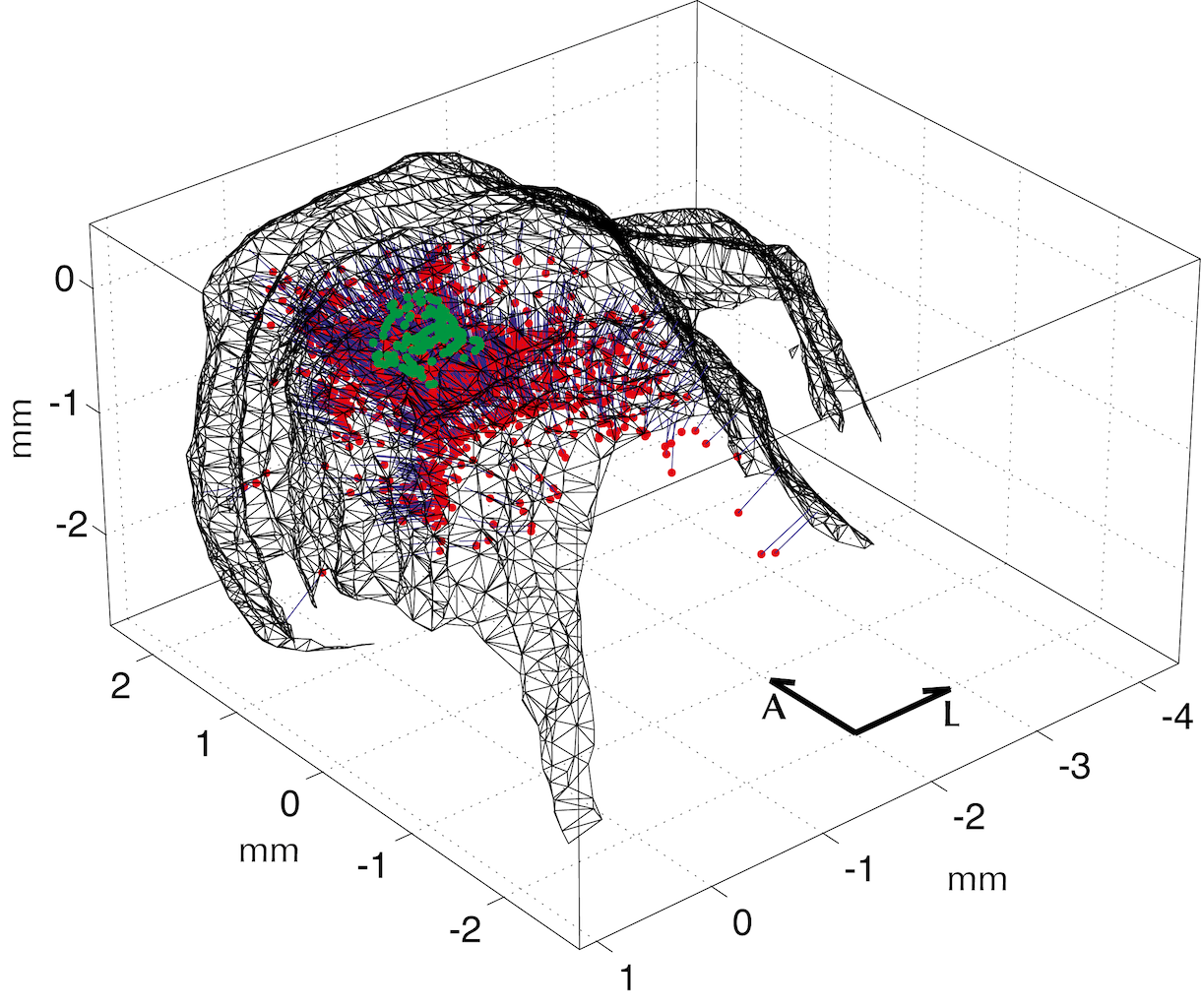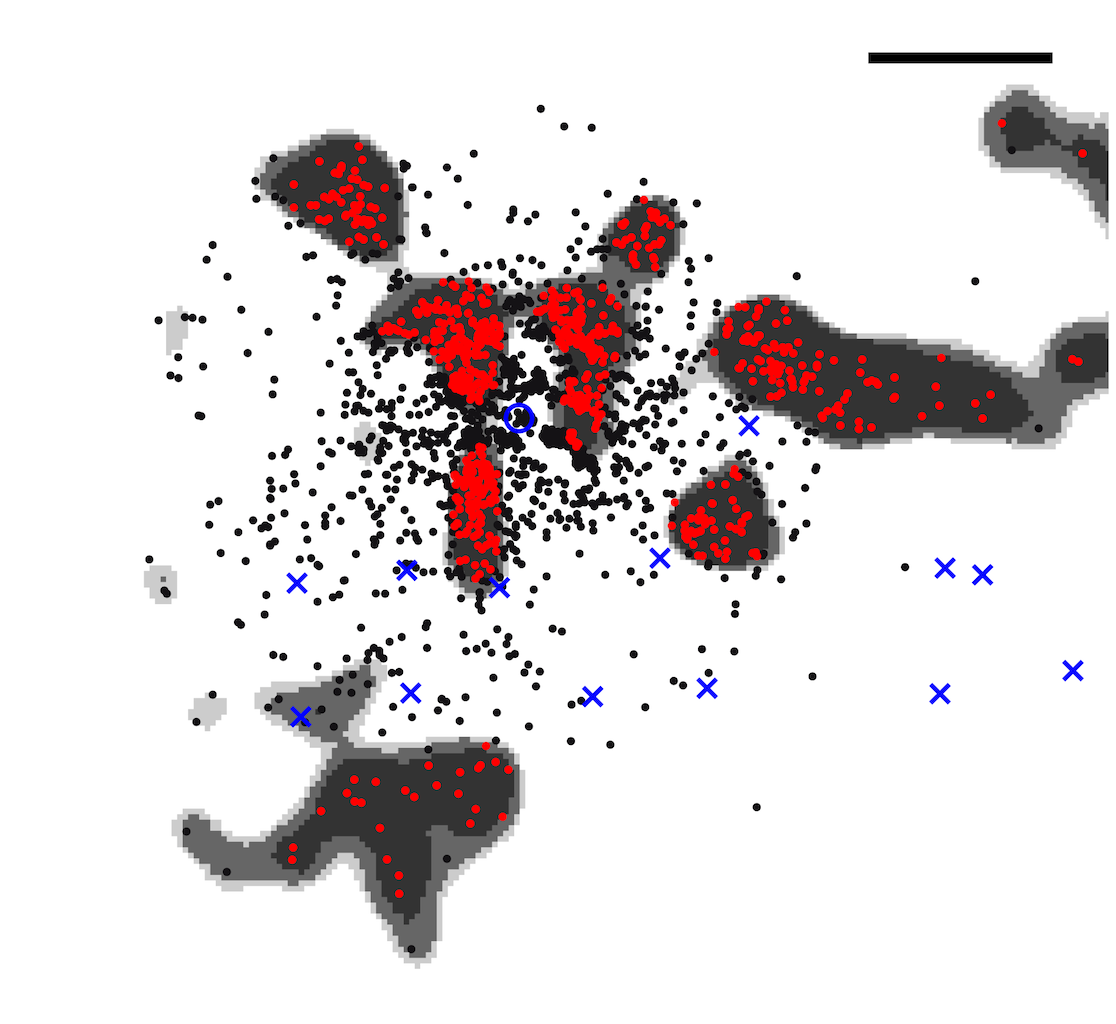Clustering of retrograde labelling in cat visual cortex
Finding the daisy stems

 Project Available!
Project Available!Reconstruction

Reconstruction
Flattening

Flattening
The emergence of orientation specificity in the visual cortex has been the classical model to study cortical computation. In primates, carnivorous and ungulates, neurons with similar function group themselves forming a columnar map of orientation preference. Neurons in each of the columns not only connect locally within the column but send axons that will form clusters in other functional regions.
These distal clusters are particularly evident in the superficial layers where the axons of excitatory neurons collectively form a latticework spanning all the cortical area. Although the outward projections from these neurons have been explored in detail, the location of neurons that project to a specific point in cortex have not.
We will examine sets of neurons in the visual cortex of the cat that were labeled by single injections of a retrograde neural tracer in the superficial layers. For the same area of cortex, we also collected 2D maps of orientation preference so we can relate structure to function. Some of the labeled cell bodies fall within clusters and some do not — is there a correlation between clustering and cortical layer, or cell class?
You will extend an existing set of Matlab scripts and algorithms for flattening cortical reconstructions, identifying clusters of labelled neurons and aligning these reconstructions with 2D maps of cortical function. You should have experience in Matlab, and experience in implementing complex algorithms in code. You will learn to work with digitised neural reconstructions as well as with functional imaging data. This hands-on data analysis experience is invaluable to further research work.
The INI is a multi-disciplinary institute, spanning neuro-physiology and -anatomy, physics, engineering and mathematics. Working at INI gives you exposure to a wide range of fields and research projects. This is a masters level project, requiring six months minimum commitment. Unfortunately, no funding is available for this project.
Contact
Please write to and if you are interested in pursuing this masters project.